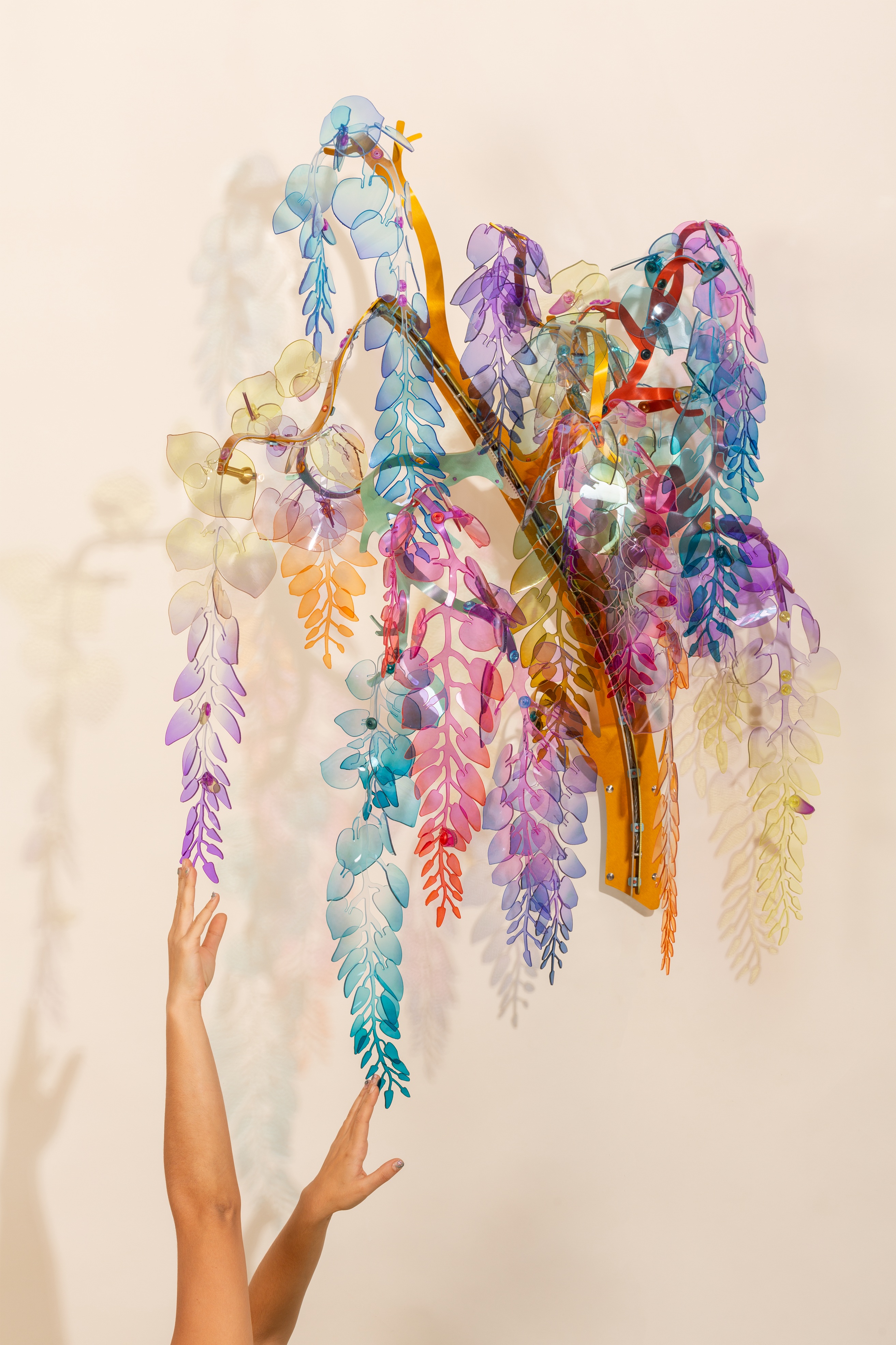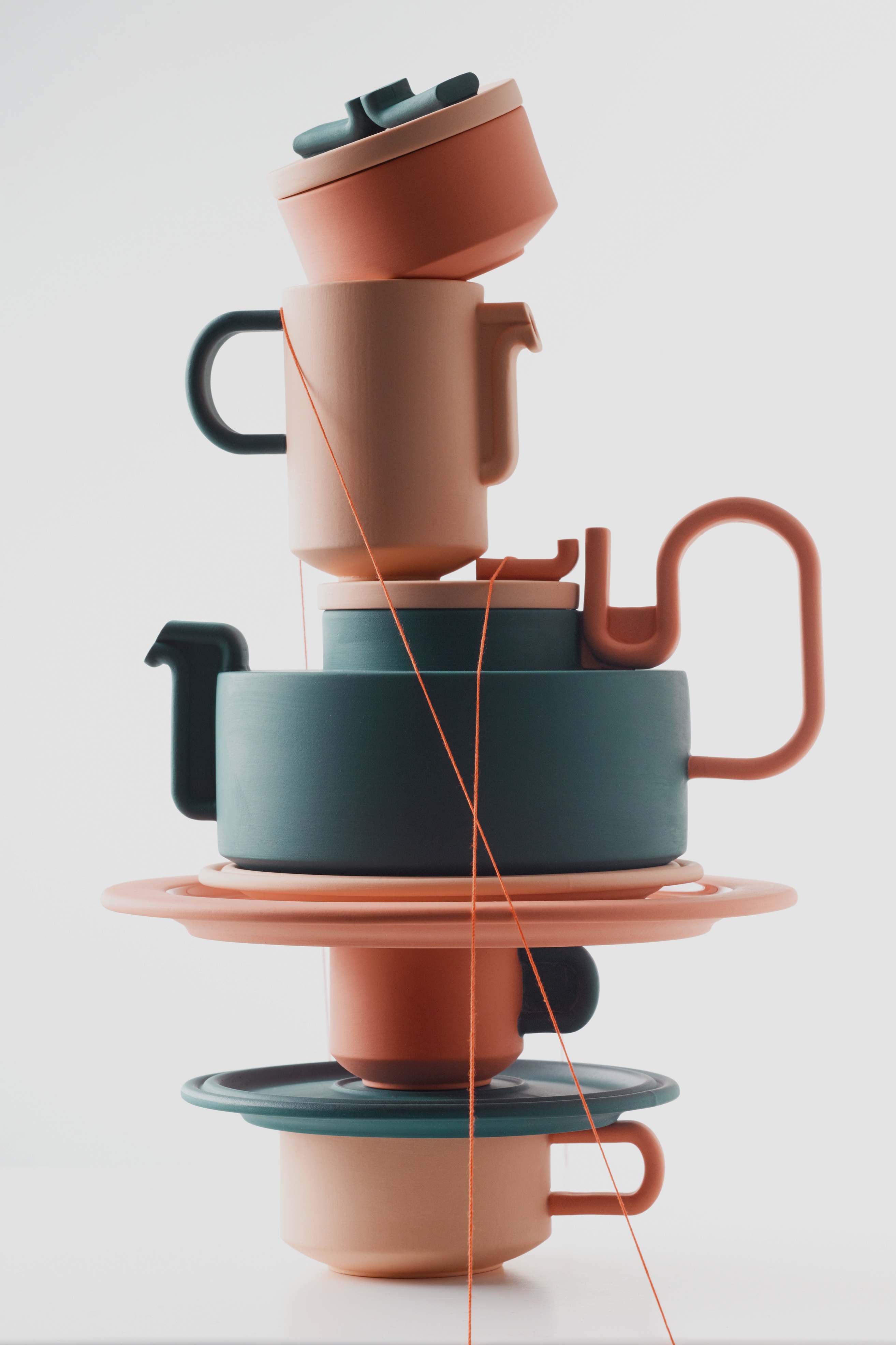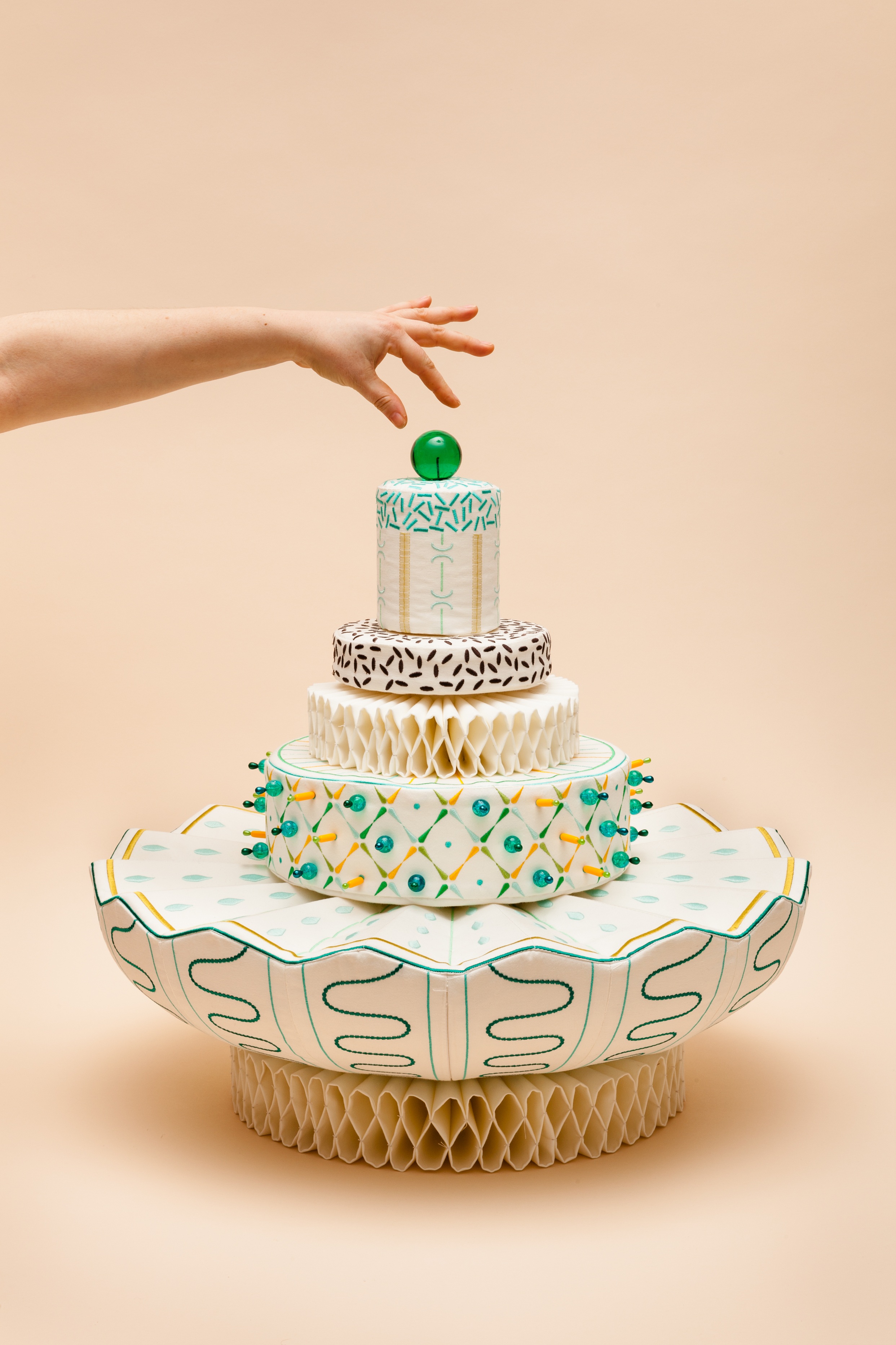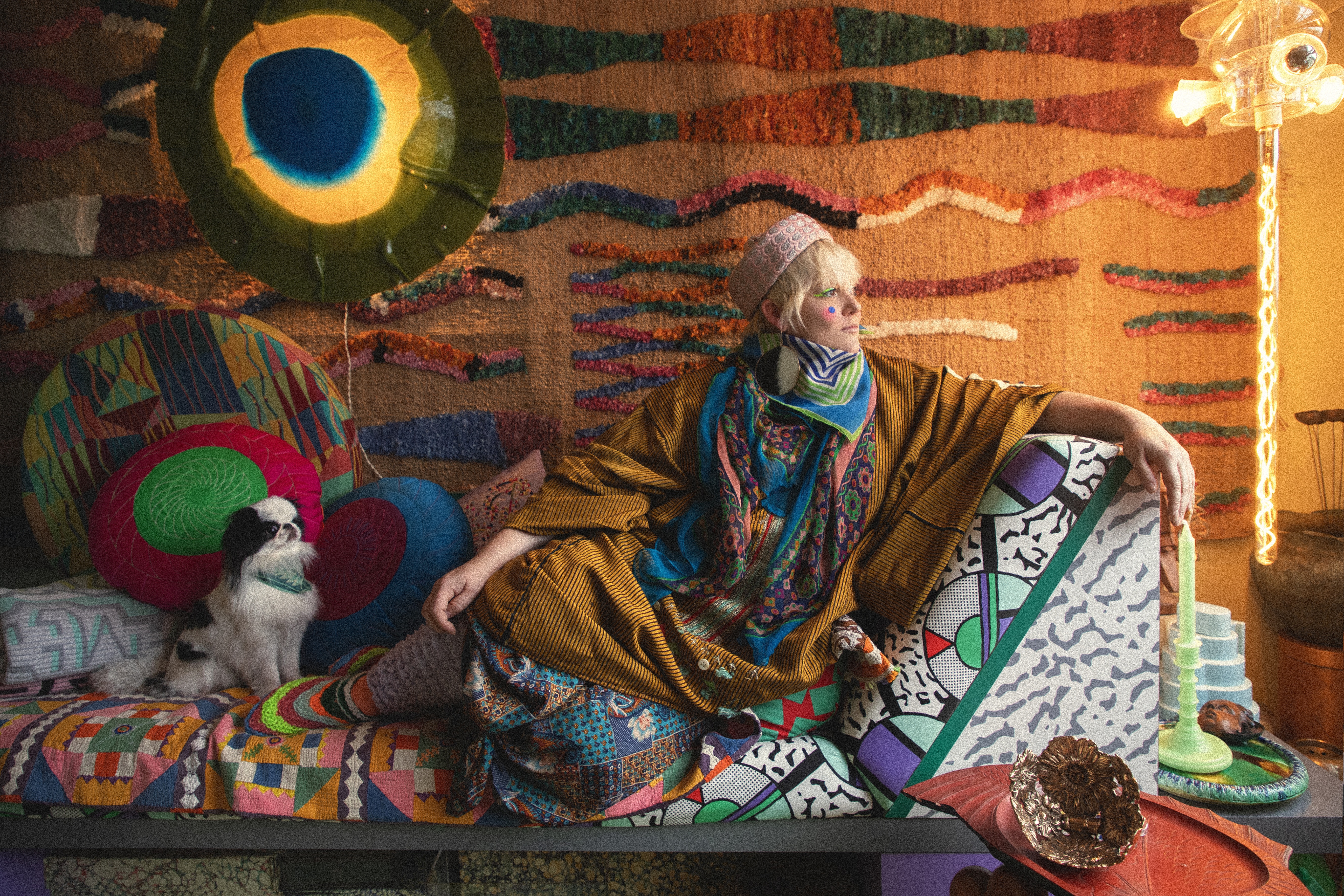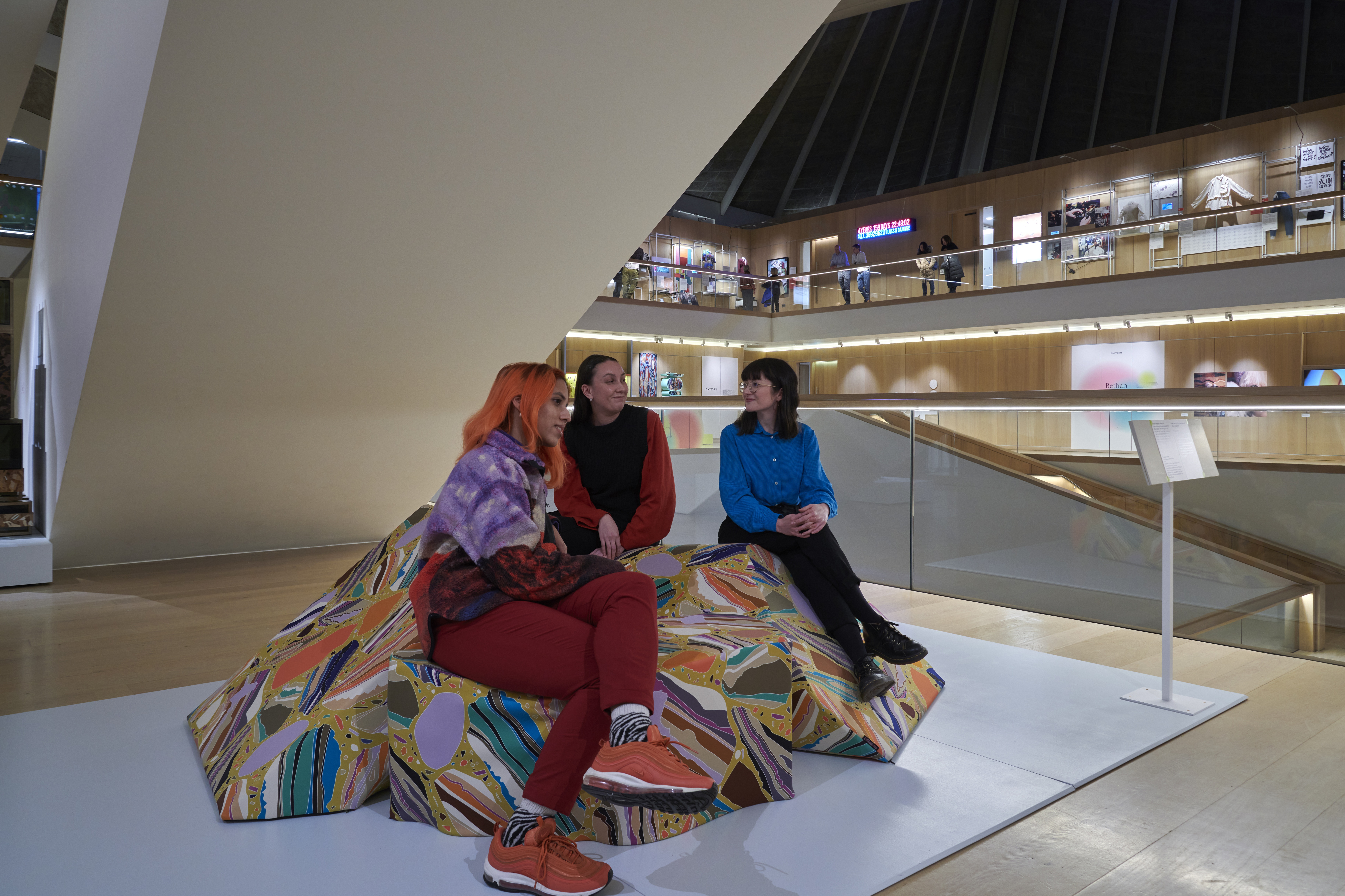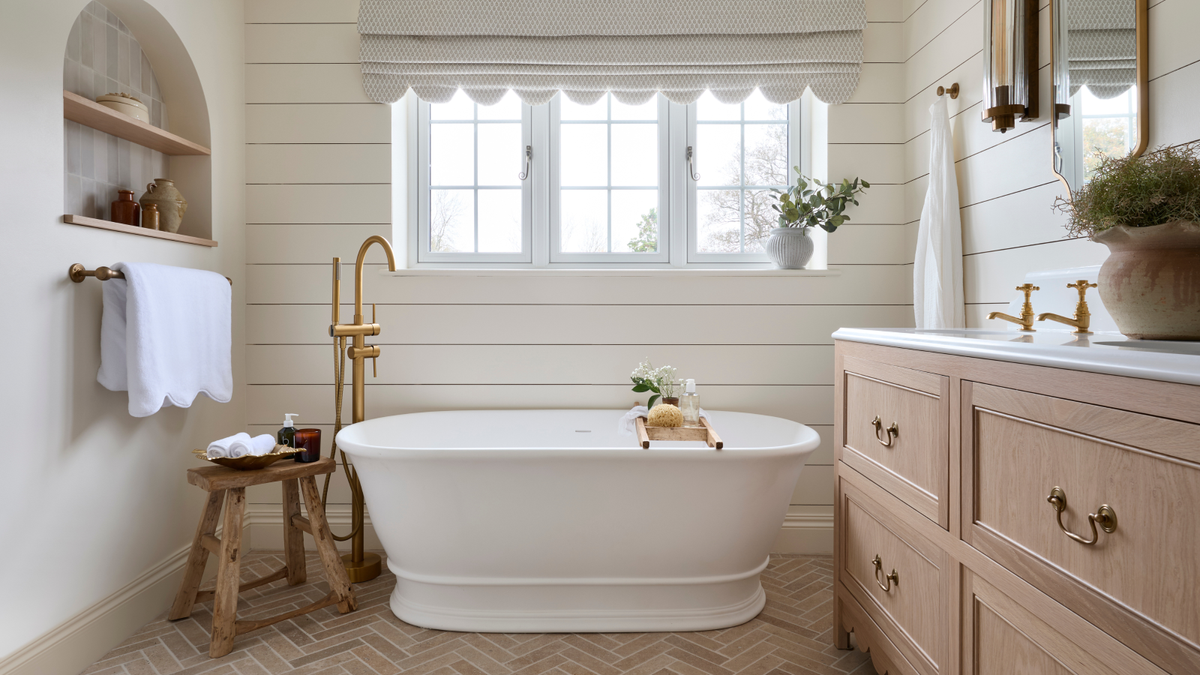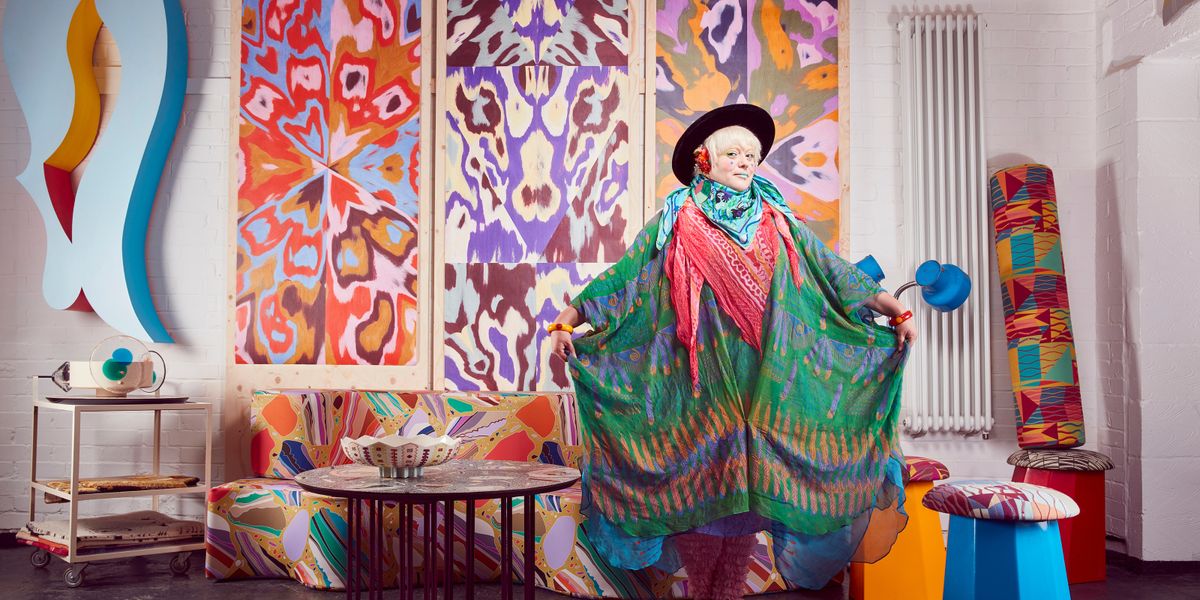
Bethan Laura Wood —
To say that Bethan Laura Wood looks in her element when I visit her Hackney studio on a late-March Friday morning would be a total understatement. It is the first time I meet the Shropshire-born artist and designer in person, having been a fan of her kaleidoscopic creations — an explosive, evocative blend of whimsy and functional design — for a while. Yet, be it because of her impeccably color-matched and instantly recognizable, exuberant outfit or due to my familiarity with her eye-catching practice, watching her step outside of her workshop’s glass door to check I am in the right place (it was Friday. I got lost. But that’s another story) feels more like reuniting with an old friend than meeting a complete stranger.
When Wood lets me in, it is impossible to abstract her from the dense composition of furniture prototypes, ranging from creaturesque, fluffy snakes and pop tufted rugs to trippy wooden panels and mesmerizing speckled sofas, ottomans, and coffee tables, and the equally striking collection of objects, glassware, and ephemera that consistute her world. Dressed in a white, crisp linen maxi dress styled with two different scarves — a pattern, turquoise one, worn around the neck, and a wide-striped, yellow and orange wool shawl, wrapped around her sholders — matching bangles, huge gold pendant earrings, red stick-on pois for cheeks, and a wide, textural beret on her head, she is the missing piece in the imaginative puzzle that is her work.
As the protagonist of the Design Museum’s inaugural PLATFORM exhibition (through January 25, 2026), a new, free-to-access annual display spotlighting a different designer at a time within the four walls of its level 1, and the forthcoming Milan Design Week, where Wood will unveil multiple collaborations, the artist is deep in the trenches of production when we chat. Luckily, the many commitments don’t take away her bubbliness, sharpness of thought, and creative enthusiasm, three elements that, also tangible in her ongoing presentation, which marks her debut UK solo show, contribute to making it one of the best design exhibitions in London.
“Are you warm enough? This isn’t the toastiest of spaces,” the designer asks as I press start on my recording. I nod smilingly, amused by how her dog Wilma, who sits on her lap, looks like the most eager of studio companions. “She assists me by eating chicken near me, and I love that,” Wood laughs.
This isn’t the first time she has collaborated with the Design Museum. In 2009, the same year in which Wood graduated from the Royal College of Art with an MA in Product Design, the multidisciplinary talent was among the designers in residence called to re-envision the institution’s former Shad Thames location through bespoke, site-specific installations. On that occasion, she impressed her shape, color, and texture-led eye onto the museum’s café, transforming it through sculptural furniture pieces obtained from a patchwork of laminates.
Since founding her eponymous studio 16 years ago, Wood has forged named collaborations for numerous homeware and fashion brands, including Valextra, Kvadrat, Tory Burch, cc-tapis, Hermes, and Dior, shared the stage with trailblazing artists at Milan’s world-leading collectible design gallery NILUFAR, and exhibited anywhere from the V&A and the Swiss Institute in New York to Tokyo’s Museum of Contemporary Art. Her works also belong in the permanent collections of eight acclaimed institutions worldwide, like Lausanne’s mudac and San Francisco Museum of Modern Art. Was she aware that this was what she wanted to do, even as a child? Sort of.
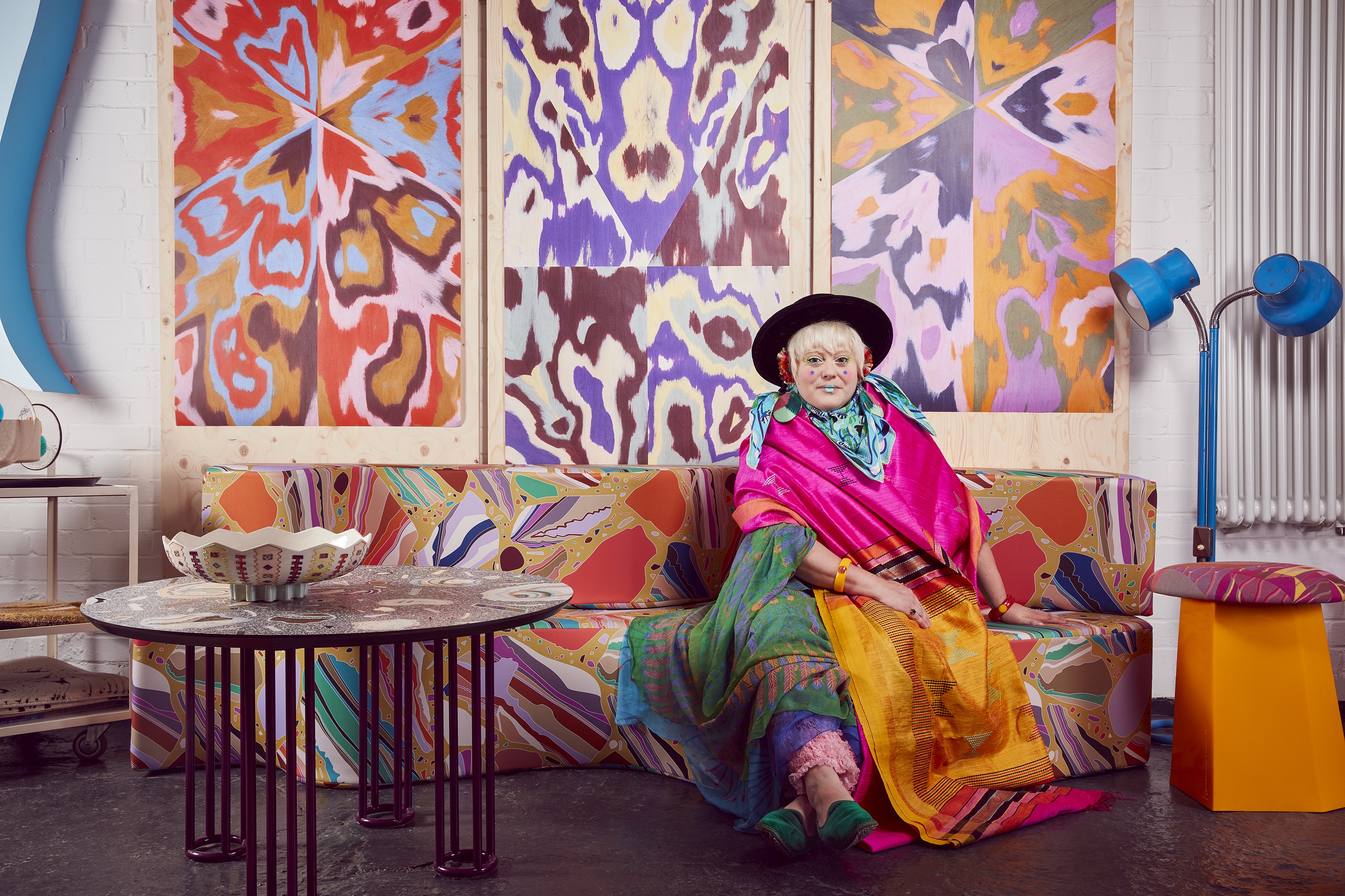
“Design is meant to be about a conversation between people and an object, so for me, it was very important to have something that visitors could actually touch, interact, and play with.” — Bethan Laura Wood
(Image credit: Mark Cocksedge. Courtesy of the artist and the Design Museum)
“I’ve always wanted to be a creative person,” Wood tells me, sitting on her spectacular terrazzo revisitation of the iconic Poltronova’s Superonda sofa, a further, more scattered and rock-like adaptation of which now serves as a soft seating area in her Design Museum showcase. Having tried her hand at anything from sewing and animatronics-making to jewelry, woodworking, and ceramics between her school and her BA years, she eventually realized that “it was the objects that you use and are present in the everyday, although in unusual ways, that fascinated me most,” the artist explains. Instead of choosing a single material as the core of her practice, toward the end of her studies, Wood embraced a “more three-dimensional design direction”, starting to produce one-offs or limited-editions that, she says, capture her desire to eternally “move across different types of things”.
Looking at the designer’s entrancing ouevre, including the 70-something spirited tableware, cabinetry, lighting, and other furniture contributions now gathered in the PLATFORM show, it comes almost instinctive to point at color as their predominant feature. Surprisingly, though, that’s not one of the principles Wood sees as intrinsic to her work. “All of my designs are very layered,” she says. “Color is something I use a lot in my work, but not all of it is colored. Maybe for some people, I am making hot messes — or lukewarm ones if they don’t like them. Still, for me, there is a very strict system of guidelines I rigorously stick to within each body of work to be happy with the end result, one easy rule of thumb being preventing any single reference from becoming over-dominant or obvious, as that blocks viewers from discovering something else in it. That’s why many of my forms and shapes aim toward abstraction.”
She turns to the three sections in which the Design Museum exhibition is divided, namely Desire, Adornment, and Hyperreality, to break down her production further. “I’ve always been interested in how we connect to inanimate objects — how we simultaneously seem to understand it and struggle to make sense of it,” Wood explains. “This dynamic interplay we have with the items around us, our urge to have them, and the disdain we feel for our desire, are themes I find deeply fascinating.”
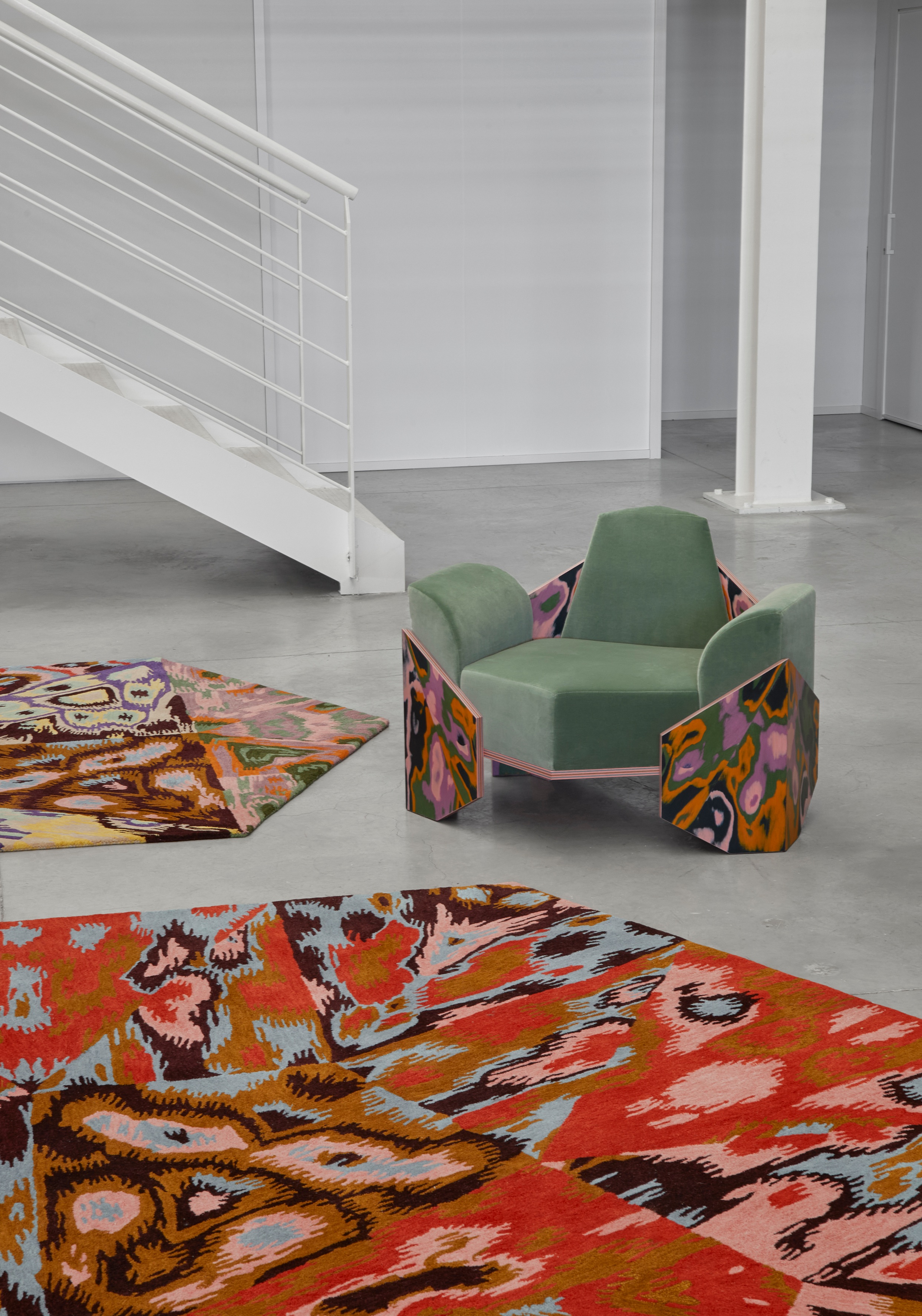
Last spring, cc-tapis’ Milanese headquarters lent the stage to “Kaleidoscope-o-rama”, the first of Bethan Laura Wood’s “Travelling Bluestocking Salons”. In this participatory series, Bethan Laura Wood shares her iconic carpets with whoever decides to join her collective brainstorming sessions on all things life and design.
(Image credit: Alejandro Ramirez Orozco. Design: Bethan Laura Wood)
The designer’s inclination toward aesthetic details and ornamentation manifests itself in the painstakingly rendered geometrical shapes that compose her installations, as well as in the surreally realistic, food and nature-inspired subjects that inhabit some of her most captivating creations. From the rainbow foliage of her Wisteria Chandelier (2022) to the bird-shaped motifs of her Flock Stain (2014) porcelain cups, and the delicious-looking Watermelon Stack and Banana Split ‘dessert sculptures’ part of her London display, Wood’s expression seamlessly straddles the otherworldly and the verisimilar. That’s the idea behind the Hyperreality portion of the display.
“‘Hyperreality’ is a term I used to refer to quite a few works that skirt around the dimension between realism, the ‘hyperreal’, and the fake,” she says. For the artist, the section serves as an opportunity to explore how our relationship to the fictitious, which “previously had a very negative connotation”, has changed, surveying the continuum between what we deem as natural and what, instead, we think of as man-made. “Considering the way we now live in a very augmented universe of digital and physical exchanges, this is something I find impossible to shy away from,” Wood explains.
Despite her awareness of the virtual realm, as far as the goal behind her craft is concerned, the here and now is what matters. “Design is meant to be about a conversation between people and an object, so for me, it was very important to have something that visitors could actually touch, interact, and play with,” Wood says, referring to her Terrazzo Quarry, the three-part banquette guests are invited to relax on while enjoying her PLATFORM show, and how “people slide down it, bounce on it, and jump into its center”. The greatest test, she laughs when asked about the challenges of creating items that blur the lines between art and design, will be “to see whether that piece is going to survive.”
As for the lessons and joys that come with being given a space to share her work with the world, there seem to be many. For starters, “it was great to be part of the free access area in the museum, because it is down to these kinds of institutions to push to make access for people at any stage in their career, as well as for visitors from all backgrounds, however versed in design they might be. Plus, let’s be honest, hanging out with Tim Burton downstairs, and Wes Anderson, who will be exhibiting there next, isn’t that bad,” Wood smiles. Most of the designer’s satisfaction, though, appears to stem from the direct exchanges her work facilitates between her and those who have either followed it for a long time or only just come across it.
“I had one wonderful lady come up to me after visiting the PLATFORM display to say how much it helped her understand the way her creative daughter thinks,” she recalls. “It is so beautiful when, working alongside the museum curators, you can find a way to not only make things digestible to a wider audience, but also more resonant, personal, and powerful for them.”
After all, the emotional power of design is what attracted her to this world in the first place. Now, through her fantastical understanding of craftsmanship, Wood gets to pass that fascination on to someone else. “We live in a kind of present that’s circular,” the artist says, mentioning how the biggest interior design trends come back time and time again, how she finds herself most attached to and influenced by her parents’ 1970s belongings — like “the sludgy green China they received for their wedding, which I have succesfully re-homed from their home” — and will never stop to feel nostalgia for them. That same long-term engagement is what Wood hopes her work will unlock for others in return.
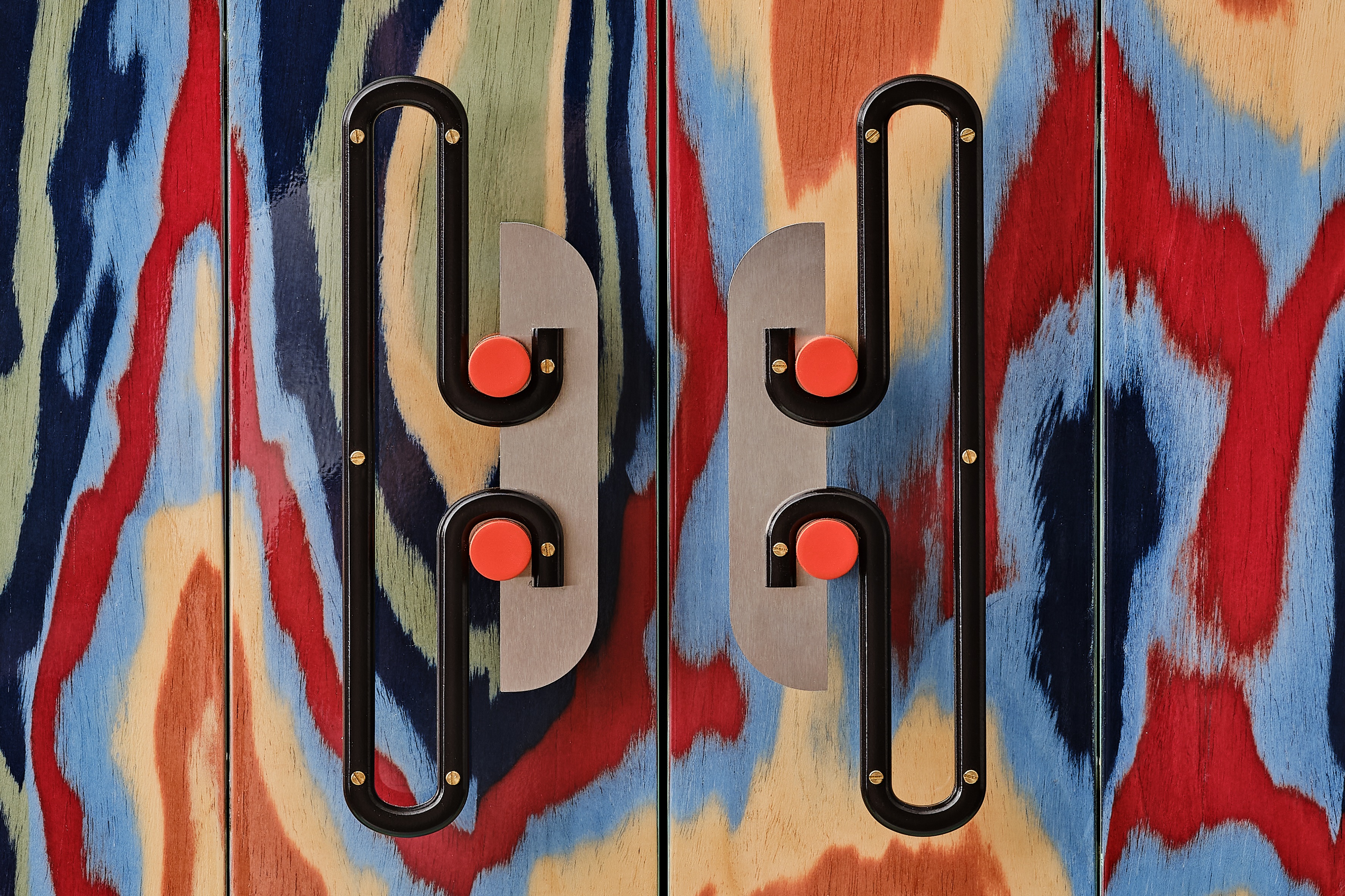
“If you buy some of my marquetry work, for example, then when you open its doors, when you use it, you will realize that the laminates all have different characteristics to them.” — Bethan Laura Wood
(Image credit: Emanuele Tortora. Design: Bethan Laura Wood. Courtesy of the artist, NILUFAR, and the Design Museum)
“I want to make things that reward and uplift you the more time you spend with them,” she says. “If you buy some of my marquetry work, for example, then when you open its doors, when you use it, you will realize that the laminates all have different characteristics to them. Much in the same way in which, if you rub your hand on this table [touches the coffee table where we are sitting], you will perceive the very subtle differences between its matte, glass, and textured surfaces. It’s not about making pieces that also have hidden things in them; it’s about conceiving things you can explore and discover through the process of engaging with them.”
Her favorite part of it all, though, has been realizing how, “making an object and playing with these visual cues can spark a conversation with somebody who doesn’t normally think that they have any opinion on this kind of thing,” Wood admits. While doing a tour for the Design Museum years ago, she was talking with a group of people “when one of the gentlemen going round was like, ‘I don’t think I am bothered by color anywhere, but avocado bathroom suites I just will never understand,'” the designer recalls. “‘You see,’ I remember telling him, ‘I love them, but I love that you don’t.’ And what I love even more is that you don’t need to have any ‘sophisticated’ reason for liking or disliking something — what counts is that design can get people to talk.”
PLATFORM: Bethan Laura Wood is open at the Design Museum, London, through January 25, 2026



